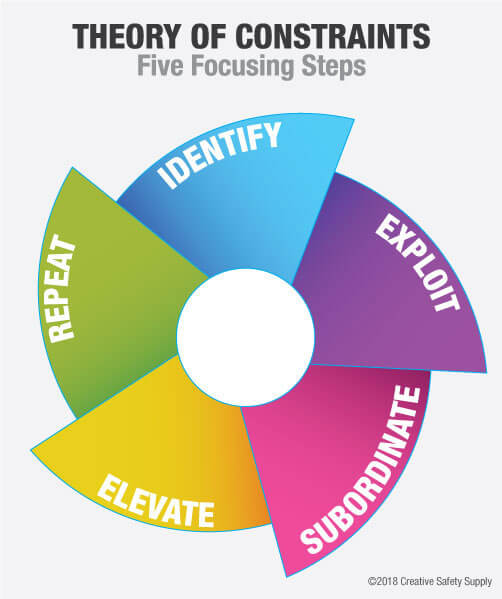
 Every system in every business all over the world has some form of constraint; some element that could be altered to improve its effectiveness. Perhaps it's an inefficient supply chain, or less than optimal equipment. Maybe's it's overworked employees, or a poorly-designed factory line. Whatever the constraint might be, it's a barrier to your success, and you'll want to excise the constraint as soon as possible. First, however, you must determine what the constraint is, where it's located, and how it can be fixed -- and that's why you need the Theory of Constraints.
Every system in every business all over the world has some form of constraint; some element that could be altered to improve its effectiveness. Perhaps it's an inefficient supply chain, or less than optimal equipment. Maybe's it's overworked employees, or a poorly-designed factory line. Whatever the constraint might be, it's a barrier to your success, and you'll want to excise the constraint as soon as possible. First, however, you must determine what the constraint is, where it's located, and how it can be fixed -- and that's why you need the Theory of Constraints.
Introduced by physicist turned business management guru Eliyahu M. Goldratt in his 1984 book The Goal, the Theory of Constraints posits that in a business, at any given point in time, there is one particular constraint limiting the potential of any system. Once that constraint is elevated, a new constraint will inevitably take its place as the focus of the business - improvement efforts, and by constantly working to elevate the most limiting constraints, a business can see rapid, meaningful improvements.
The Five Focusing Steps of the Theory of Constraints
In order to quickly determine which of a system's constraints should be focused upon, Goldratt offers a simple, five-step plan:
- Identify the system's constraint.
- Determine how to Exploit the system's constraint.
- Subordinate every other aspect of the system to the constraint in an effort to maximize potential with existing resources.
- Elevate the constraint.
- If, at any point during this process, the constraint ceases to exist, Repeat these five steps.
You'll notice that nowhere in these five steps is any mention of spending money to rapidly elevate a constraint, and with good reason: These five steps are meant to have minimal costs, and while throwing money at the issue is a viable solution, it's also wasteful, and should only be used as a last resort.
Resources
- https://www.leanproduction.com/theory-of-constraints/
- https://www.lean.org/common/display/?o=223

